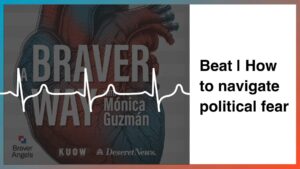Late last year, we found out that a goal 70 years in the making had been reached—“ignition,” which in atomic parlance means we got more energy out of a fusion reaction than we put in. While there’s a ways to go to get to commercialized fusion energy, we’ve at least confirmed our hunch that the reaction can produce a result greater than the sum of its parts.
That same week, I watched the show Our Universe, narrated by none other than Morgan Freeman. This documentary distinguishes itself by fusing the story of that universe with the story of life on Earth. And indeed how it all began was itself, fusion.
At its dawn, our universe was essentially a nothingness of uniform density. And it might have stayed that way if not for the tiniest variances caused by Herr Heisenberg’s famous uncertainty principle.
The reason, you might say, that there’s something instead of nothing, is that somewhere around one decillionth of a second after the start of the Big Bang, these minuscule variances of material density began to coalesce into a quark soup of elementary particles. Difference had made all the difference.
From there it was more of the same. The story of how our universe was formed is one of endless combination—taking two things and making them one. And this was only possible because of a fundamental force that had formed just a moment before, at one tredecillionth of a second in: gravity. Because of this force, which dictates that everything in the universe is attracted to everything else, after only 379 thousand more years, those subatomic particles combined to form atoms.
And here we get back to nuclear fusion, where these hydrogen atoms started joining forces within the stars, smashing together and forming bigger, ever more complex atoms. This chain of combination flows through the history of creation, with atoms forming molecules that finally started to resemble matter as we know it. “Stuff” was born. But this stuff wasn’t done combining. Dust particles started to coalesce into chunks, which gradually grew to the most incredible sizes, forming the planets that would give birth to life.
And of course, life itself is a continuation of this story. Organic chemical compounds of increasing complexity formed the primordial soup that gave rise to life. The most basic of organisms began to combine into cells, themselves joining forces and exploding into a tree of life through yet another example of the magic of combination: genetic variation.
This idea reinforces one of the most important aspects of combination—that it’s often at its best when the things coming together are quite different.
Let’s take a moment to consider this. As they say, two heads are better than one, and when two of anything join forces, there’s a good chance one might bring something to the table the other doesn’t have.
These days it doesn’t feel like we value difference enough, instead preferring that others believe the same things we do. That would ultimately mean we all pretty much have the same experiences in life. If our neighbor thinks the same way about everything, we needn’t bother trying to see things from their distinct perspective.
I don’t know about you, but I’d much rather learn something from my interactions with others, leaning into curiosity to embrace those differences, rather than criticizing them. It would be nice if, instead of seeing how wrong someone’s conclusion is, we see one more data point to expand our understanding of the human condition.
The benefits of combination, in particular combinations of difference, are part of the philosophy that informs the work of Braver Angels and our recently launched Braver Partners program.
Braver Partners acknowledges that the scale of the polarization problem in this country calls for a larger movement that pulls together as many organizations as possible of every type—civic, business, educational, religious, etc.— and calls upon them to contribute whatever it is they do best to the cause of holding our country together, combining our unique and different strengths and efforts for good.
In addition to calling on organizations large and small to help realize our shared mission, the Braver Partners program offers our partner organizations tools to help their internal cultures harness the power of ideological diversity and curiosity.
And when they join us at our convention in Gettysburg, we’ll give them the chance to create new coalitions, unleashing the power of combination to transform our national culture and reunite us as people.
Want to contribute? Tell us about an organization that might be a good fit, or help us manage our partner relationships! We’ve gotten started with nonprofits like Move for America and the Listen First Project, local religious congregations and Rotary clubs, schools like Dakota Wesleyan University, and companies like Mejdi Tours. Click here to join the effort!
By combining the ideas of very different people—and organizations—to discover not only what each can contribute but what collectively we can create, we might finally accept that together, we’re greater than the sum of our parts.



